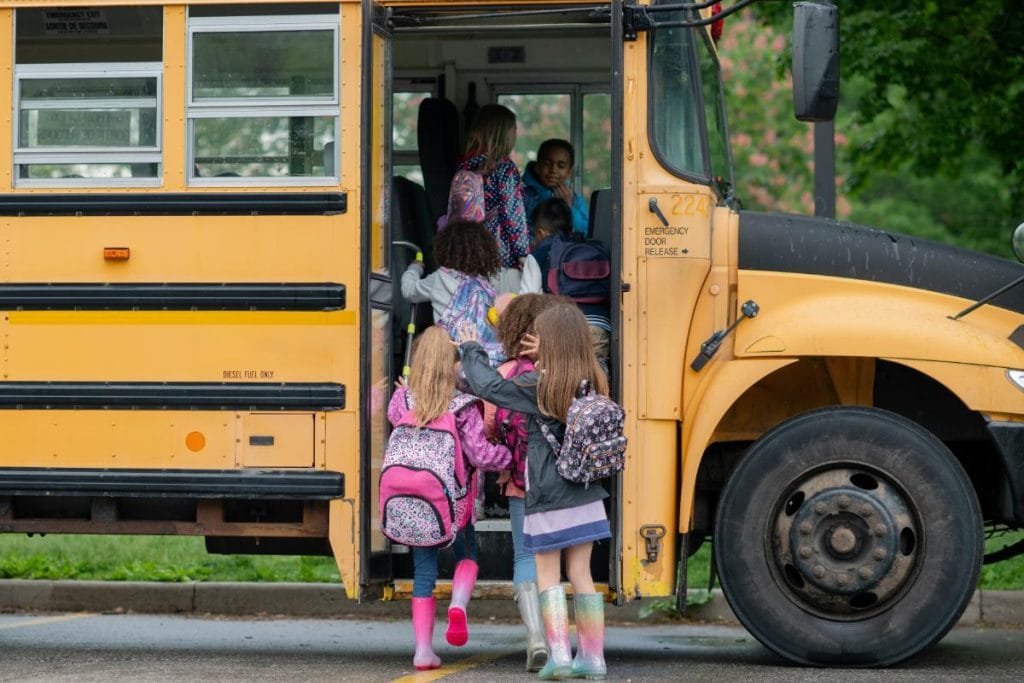
Starting school—or even just a new school year—can be both exciting and overwhelming for kids and their parents. One of the biggest challenges? Adjusting to a brand-new daily routine. For young children especially, these changes can feel like a big deal, whether it’s their very first time in school or just a transition to a different grade or building.
That’s why it’s so important to ease into the new routine early on, creating a smooth transition that helps your child feel confident and secure. Getting consistent routines in place before the school year begins—within a positive and supportive home environment—can make a big difference.
Here are some practical steps you can take to help your child adjust to their new school routine. From structured mornings to emotional support and getting them involved in the process, these tips can help make the shift a lot smoother—for everyone.
Gradual Transition Into School Routines
If your child is starting school for the first time, or moving into a new school year, it helps to ease into the new routine gradually. A week or two before school begins, start practicing earlier bedtimes and wake-up times. This gives your child’s body clock time to adjust so those early school mornings won’t be such a shock.
Try creating simple routines at home that mirror what school will be like—eating breakfast at the table, having quiet reading time, or setting aside moments for focused play. These little steps help kids feel more familiar with what a school day might be like.
Labeling your child’s school supplies can also help them feel more organized and confident. Personalized labels for kids not only make it easier to keep track of their belongings, but they also give your child a sense of ownership and independence as they prepare for this new adventure.
Providing Emotional Support and Encouragement
Adjusting to school isn’t just about getting out the door on time. Kids also need emotional support as they take on a new environment, new people, and new expectations. It’s totally normal for them to feel a mix of excitement and nervousness.
Let your child know that it’s okay to feel unsure or even scared. Encourage them to talk about how they’re feeling—whether it’s butterflies in their stomach or excitement about meeting new friends. Listen without rushing to fix anything, and let them know their emotions are valid.
After school, take time to ask open-ended questions like, “What was the best part of your day?” or “Who did you sit with at lunch?” These kinds of conversations help your child process their experiences and build positive associations with school. When kids feel emotionally supported, they’re better able to adapt and grow confident in their new routine.

Involving Your Child in the Process
Kids are more likely to embrace new routines when they feel like they’re part of the process. Let your child help create their daily schedule. Give them age-appropriate responsibilities, like setting out clothes the night before or helping pack their lunch. These small tasks teach responsibility and help make mornings go more smoothly.
Letting your child pick out their backpack, lunch box, and school supplies can also build excitement. Adding name labels to their items makes it easier for them to keep track of their belongings, and reinforces their sense of ownership.
When children are part of the planning and preparation, they feel more in control—which can go a long way toward easing any nervousness they may be feeling.
Maintaining Consistency and Flexibility
Once your school routine is in place, try to stay consistent—but remember, flexibility is just as important. Kids thrive on structure, but life doesn’t always go according to plan. Help your child learn to adapt by showing them how to handle schedule changes calmly.
If something unexpected pops up—a substitute teacher, a missed bus, or a canceled after-school activity—talk about it with your child. Reassure them that these things happen, and that you’re there to help them through it.
On particularly tough days, offer extra hugs, downtime, or a favorite after-school snack. Finding the right balance between routine and flexibility helps your child build resilience and confidence for the long haul.
Helping your child adjust to a new school routine takes a mix of preparation, patience, and support. By setting up consistent morning and evening routines, gently introducing new habits, involving your child in the process, and being there for emotional support, you’ll give them the tools they need to succeed.
Organizational tools like personalized labels and school supplies can also make the transition easier by keeping school gear in order and giving kids a sense of control. Most importantly, your calm, steady guidance will help your child feel secure and ready to take on this exciting new chapter.
